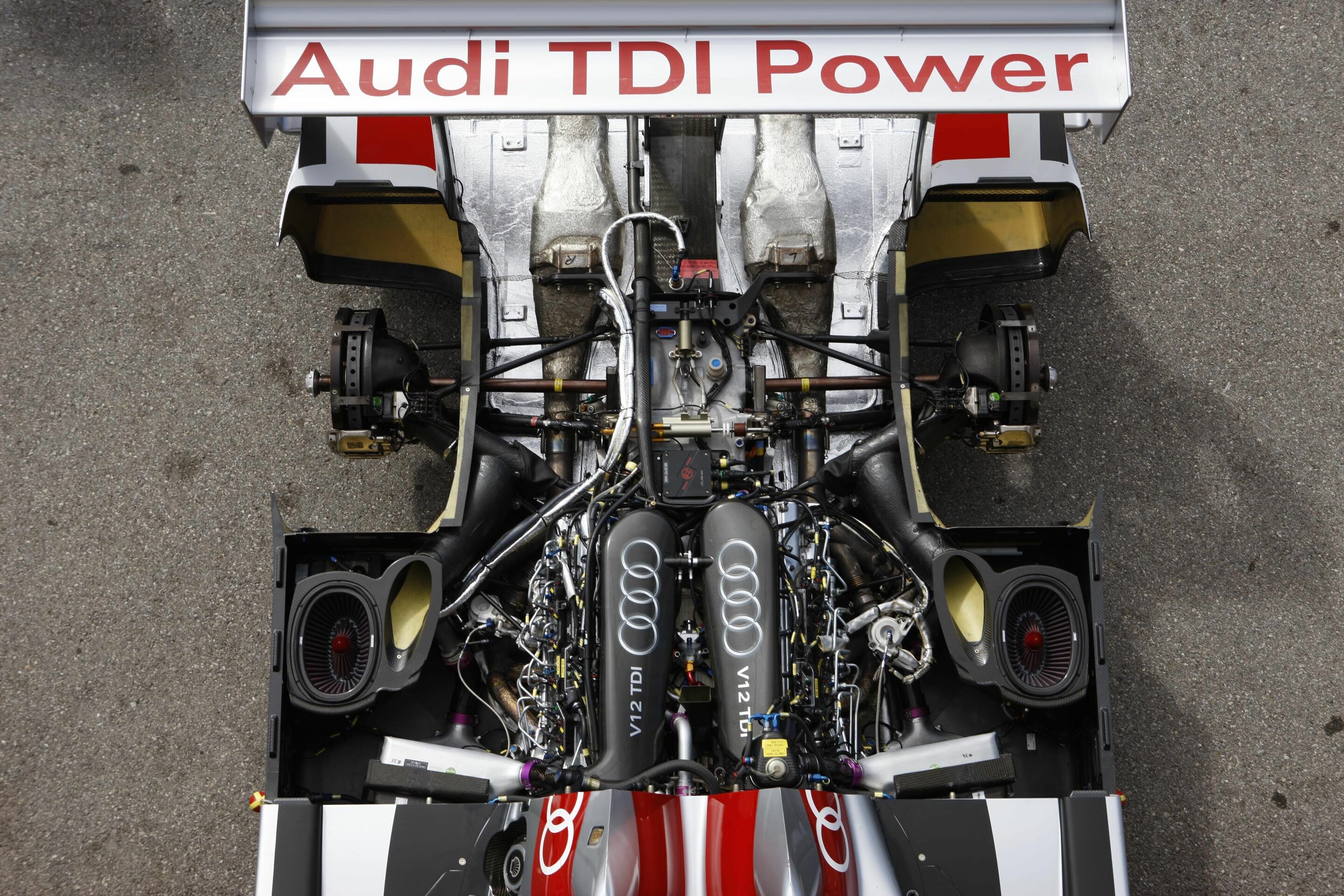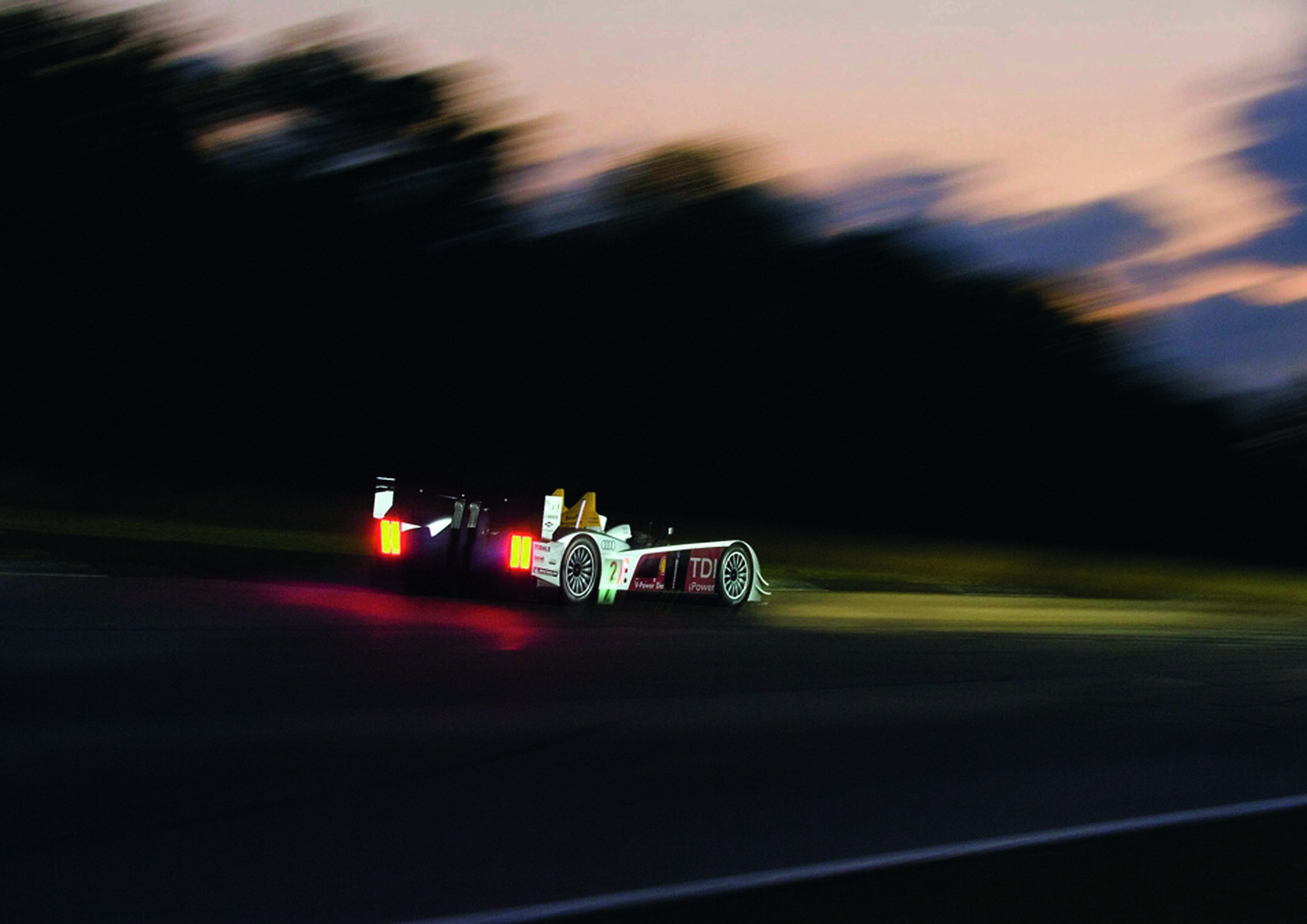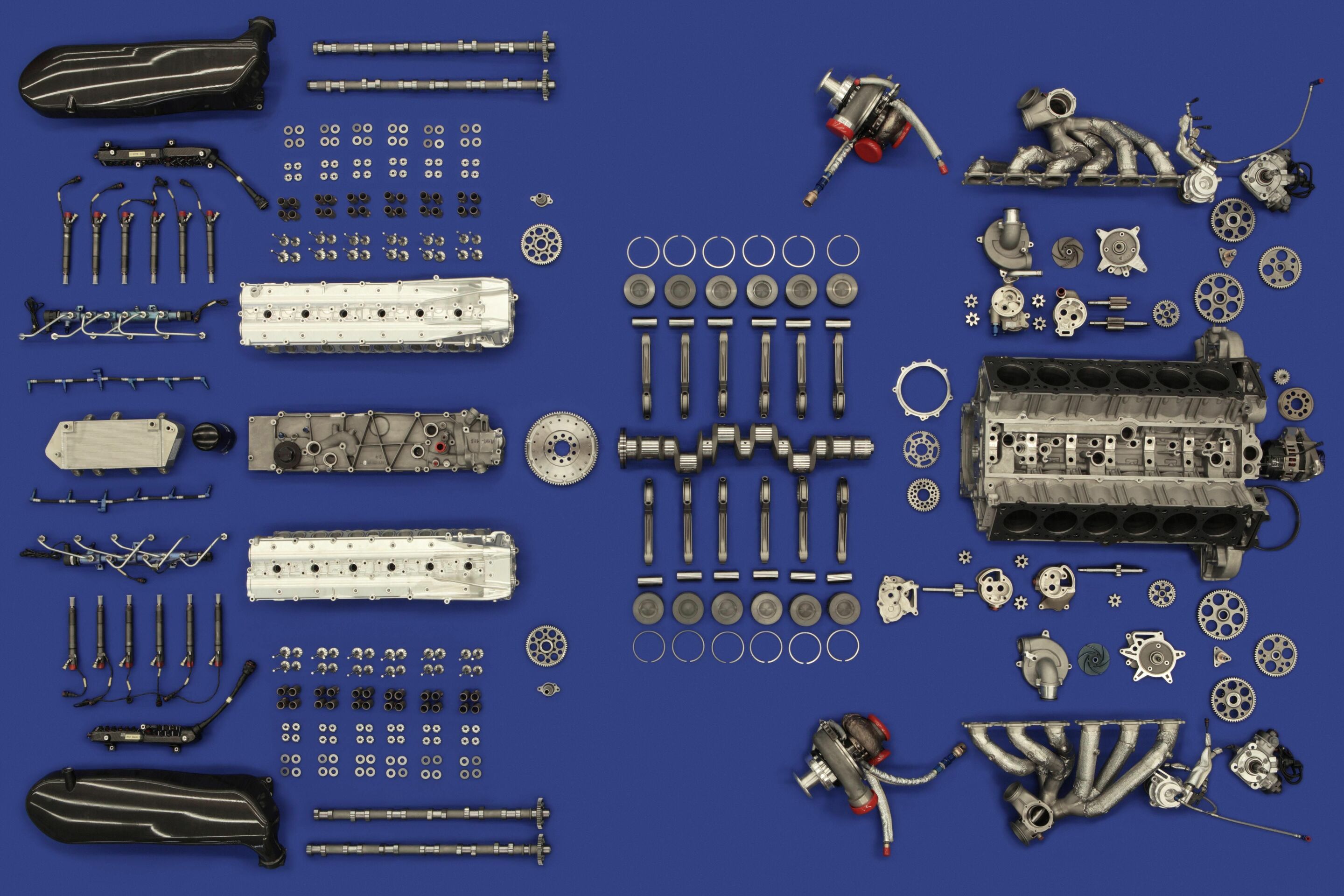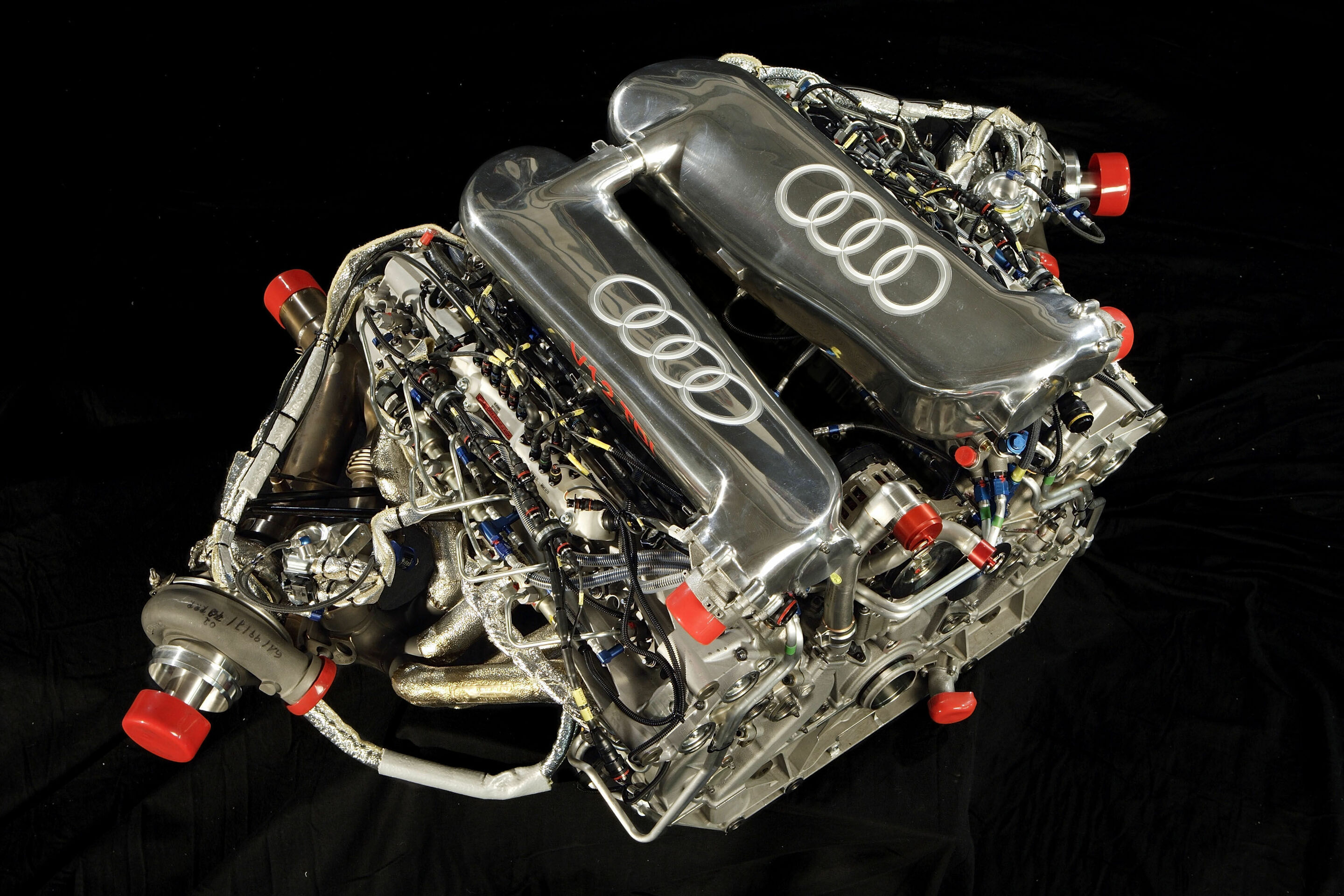Search
All search results for "r10 v12"
(23)
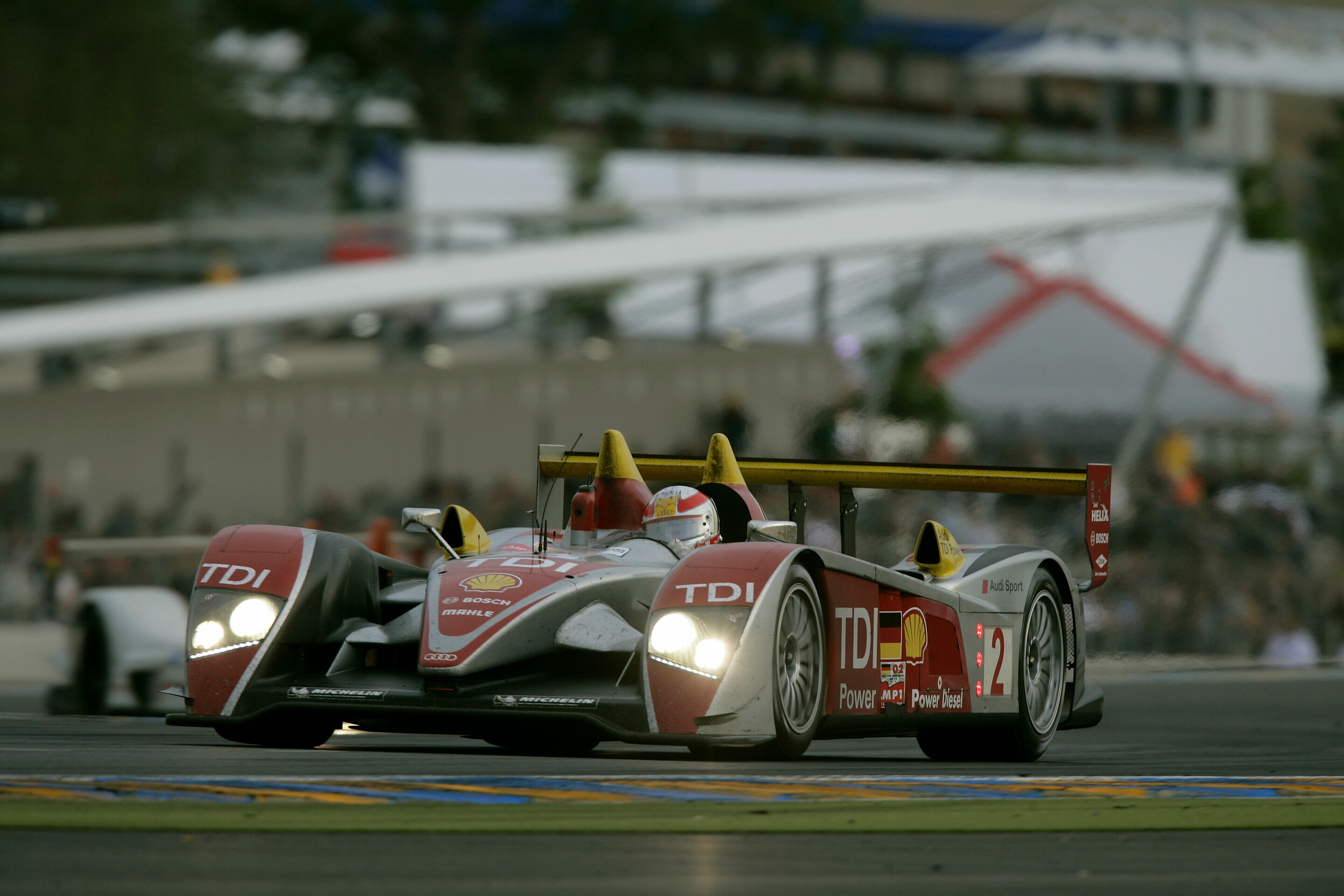 Audi achieves second Le Mans hat-trick
Audi achieves second Le Mans hat-trick
Capello/Kristensen/McNish win thriller Audi R10 TDI remains unbeaten at 24 Hour classic Eighth Audi victory out of ten starts at the Sarthe
The Audi R10 TDI remains unbeaten in the Le Mans 24 Hour race: in its third attempt, the diesel sportscar won the French endurance classic yet again. After the incredible thrill of the 76th edition of the race, Dindo Capello (Italy), Tom Kristensen (Denmark) and Allan McNish (Scotland) triumphed at the wheel of the Audi R10 TDI number 2.
The widely anticipated duel between Audi and Peugeot definitely kept its promise: in front of a record crowd of 258,500 spectators, the two car manufacturers entered into a thrilling battle with their diesel sportscars which Audi finally won by a margin of 4m 31s. During the entire race distance, the winning Audi R10 TDI and the best Peugeot 908 was never separated by more than a lap. After Peugeot initially set the pace, both the reliability and efficiency of the Audi R10 TDI gained the upper hand at night. After rain set in at Le Mans, Dindo Capello, Tom Kristensen and Allan McNish took the lead at 05:17 and held it until the finish at 15:00 hours. On a rain-soaked track, the Audi drivers fully profited from the superiority of Audi TDI Power and led the field by a margin of one lap. In addition, they took advantage of the fact that Audi Sport Team Joest had entered the race with a set-up that was the best compromise for both dry and wet track surfaces. Whilst the opposition had to change their cars during the race to a rain set-up, Audi only needed to change tyres. Changing tyres, however, was an exercise that was practiced frequently as the conditions changed throughout the second half of the race owing to the weather. Slicks, intermediates, and rain tyres – it was crucial to take the most suitable tyres at the correct time. Audi Sport Team Joest and the Audi drivers fully exploited their experience and operated faultlessly.
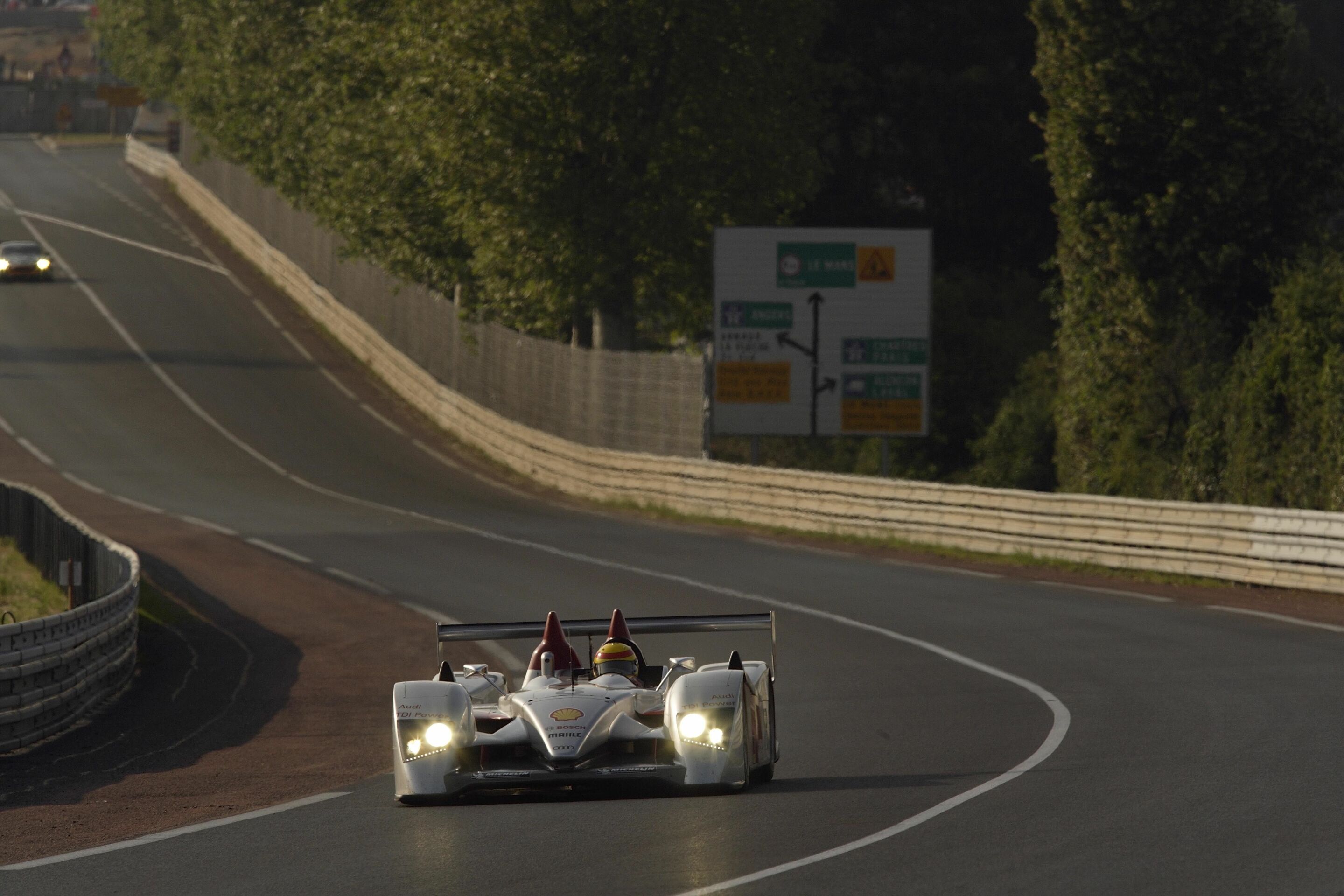 Flashback: Le Mans 2006 and the first diesel success
Flashback: Le Mans 2006 and the first diesel success
The Audi R10 TDI made a strong statement. Its V12 TDI engine delivered 650 hp of power output and produced more than 1,100 Newton meters of torque. It was the first ever diesel-powered sports prototype of an automobile manufacturer. Impressive data – but Le Mans is known for posing many hurdles. The manageability and reliability of an all-new technology are put to a particularly tough test in an endurance race like this one. The Audi that was a completely new development had its ‘dress rehearsal’ in the Sebring 12 Hours in March 2006. “At Sebring, we saw how complex an engine change can be,” Ralf Jüttner, Team Director of Audi Sport Team Joest, recalls. “That’s why we decided not to change the engine before the race – as usual – but to use the same power-plant in all practice and qualifying sessions, as well as in the 24-hour race.” As a result, it was necessary to drive as few kilometers as possible in the practice and qualifying sessions. Setting up a new race car for the Le Mans track under these circumstances posed a major challenge. Two Audi R10 TDI cars were on the Le Mans grid. While car number ‘7’ suffered a few setbacks in the race, the subsequent winning car, number ‘8,’ was running impeccably and caused a sensation: Frank Biela (D), Emanuele Pirro (I) and Marco Werner (D) clinched the first diesel-powered victory in history. In the end, the V12 TDI had reeled off more than 6,400 kilometers, including practice and qualifying sessions, and taken the winners to the checkered flag at an average speed of 215.4 km/h. It was both fast and extremely clean. As a result, the TDI proved all the preconceived notions about diesels wrong once and for all. “It was impressive to see how clean this engine was,” says Ralf Jüttner. “When the car returned to the pits from the parc fermé and we were celebrating our victory, Ulrich Baretzky, Head of Race Engine Development, walked up to the winning car with paper napkins in his hands.
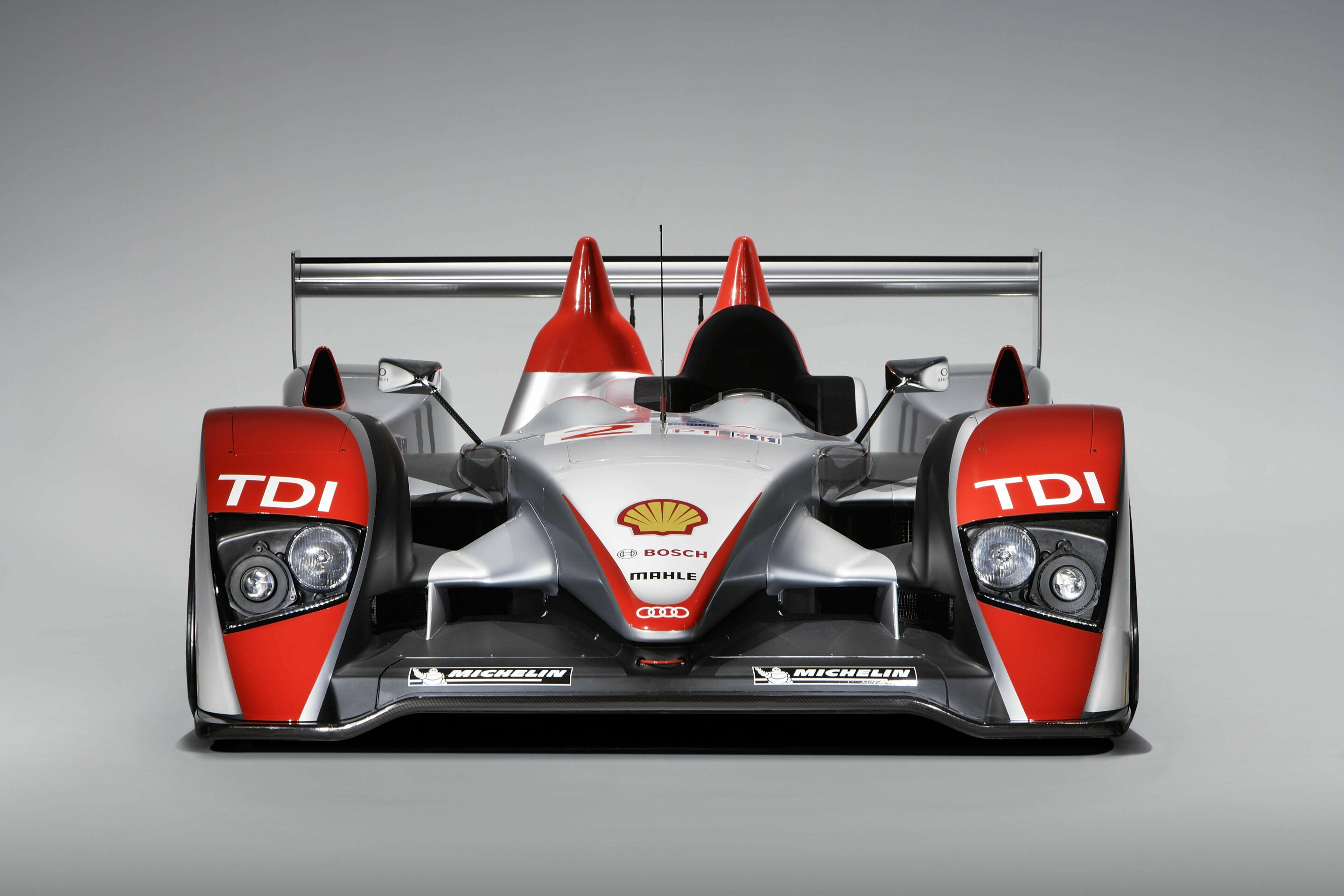 First race for new Audi R10 TDI
First race for new Audi R10 TDI
American Le Mans Series season opener at Sebring (USA) Frank Biela and Tom Kristensen complete driver line-up Audi drivers facing difficult task
The 2007 Audi R10 TDI, which was unveiled to the world’s public on Monday evening in Munich, contests its first race on Saturday (17 March) at Sebring (USA). The 12-hour race in “Sunshine State” Florida is the opening race and one of the highlights of the American Le Mans Series, and also dress rehearsal for the Le Mans 24 Hours for Audi Sport’s team.
It is not only the new design that distinguishes the further developed Audi R10 TDI from its successful predecessor that started its winning streak exactly one year ago and remains unbeaten since then. To ensure that it remains the car to beat in 2007, innumerable details were optimised on the LM P1 Prototype. The Audi R10 TDI will certainly not have things all its own way its second year of competition. The 150 kilogram lighter LM P2 cars are allowed to race in the American Le Mans Series with more engine power than at Le Mans. At the same time, diesel powered cars must manage with a nine-litre smaller fuel tank in the future – as stipulated by the Automobile Club de l‘Ouest (ACO) regulations. Reducing the fuel-cell volume from 90 to 81 litres – realised by mounting a partition in the tank – was not the only modification made to the latest R10 TDI model by Audi Sport over the winter. The complex electronic system associated with the V12 TDI engine was optimised together with partner Bosch. The majority of the other modification targeted an improvement in efficiency, consumption, durability and drivability. The maximum power is unchanged at around 650 hp, but the power curve was noticeably improved. The R10 TDI carbon-fibre monocoque is identical to last year’s design. Minor aerodynamic modifications, which are only visible to the trained eye, were made to the exterior surfaces. The friction and weight levels of the entire powertrain were reduced.
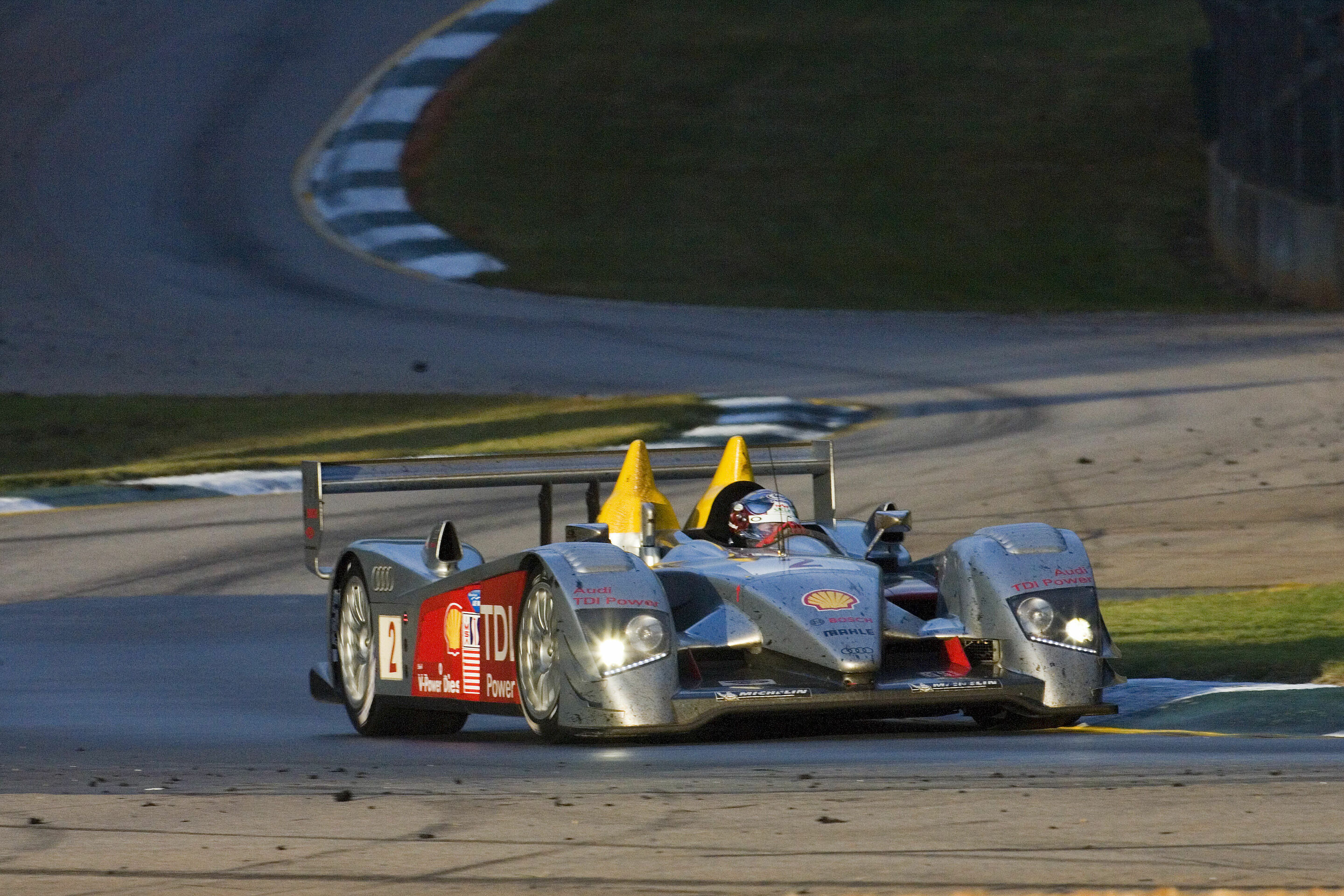 Audi R10 TDI also wins “Petit Le Mans”
Audi R10 TDI also wins “Petit Le Mans”
First victory for a diesel engine in US classic Audi R10 TDI remains unbeaten Audi clinch American Le Mans Manufacturers’ title
For the first time, a diesel-powered sportscar has won the American Endurance classic “Petit Le Mans”. With victory at Road Atlanta (US state of Georgia), Audi prematurely clinched the Manufacturers’ Championship in the LM P1 “top class” of the American Le Mans Series having already won the Drivers’ and Teams’ titles. The new Audi R10 TDI remains unbeaten in the seventh race of its début season, having now won the third most important Endurance race of the year after the 12 Hours of Sebring in March and the 24 Hours of Le Mans in June.
Audi triumphed at Road Atlanta despite its petrol-driven LM P1 prototype competitors being allowed to race with 65 kilograms less weight making them faster than the two R10 TDI prototypes. The key to success was the reliability of the revolutionary diesel sportscar which ran throughout the 1000 miles without the slightest technical problem. Consistent lap times, a good strategy, fast pit stops and the low consumption of the V12 TDI engine made the Audi success possible. In front of a record crowd of over 90,000 spectators, the Audi drivers had to fight hard with the petrol-driven prototypes especially in the first half of an incident-packed race. The lead kept changing before the two Audi R10 TDI cars finally settled themselves in the top two positions at the beginning of the seventh hour and looked set for a commanding 1-2 result. Thirteen minutes before the end of the 9-hour plus long race, however, contact with a slower GT car ended the race of the R10 TDI of Frank Biela/Emanuele Pirro/Marco Werner. Running in second position, Werner had to pit with damaged front left suspension. The repairs were completed exactly at the moment when Allan McNish crossed the finish line as the winner in the “sister” car. Biela/Pirro/Werner were classified 7th overall and 4th in the LM P1 class.
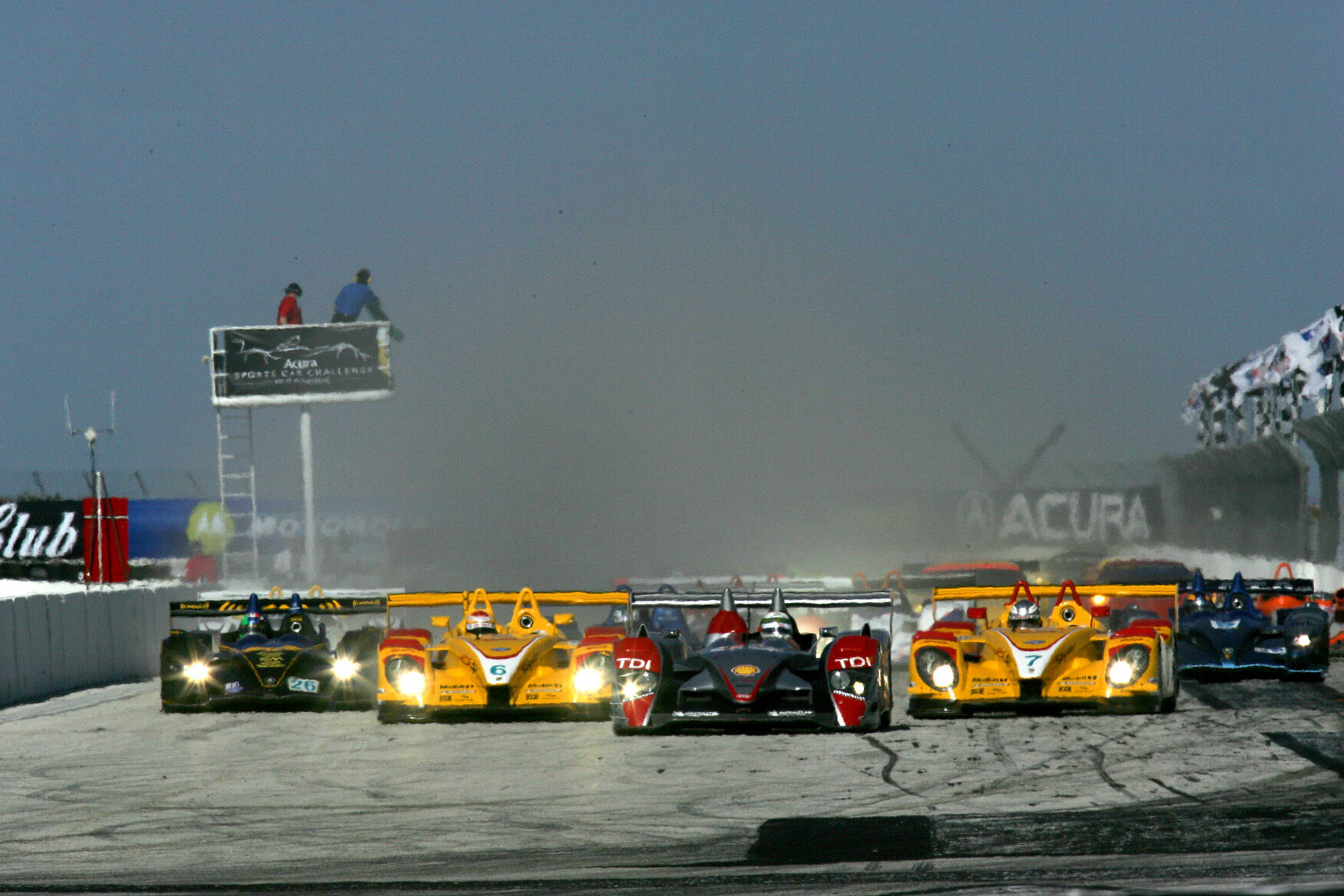 Audi R10 TDI remains undefeated
Audi R10 TDI remains undefeated
Petersburg Tenth consecutive victory for the Audi R10 TDI
The outstanding series of victories of the Audi R10 TDI continues: Dindo Capello/Allan McNish (Italy/Scotland) and Emanuele Pirro/Marco Werner (Italy/Germany) claimed an unexpected 1-2 victory for Audi in a turbulent and exciting race in St. Petersburg (Florida). This proved that the Le Mans sports car is capable of also winning on a “city” street course.
In Friday’s qualifying, Audi had to settle for third position. And also in the race, the 150 kilograms lighter LM P2 cars recorded the fastest lap times. But the spectators in St. Petersburg were able to witness an impressive demonstration of Audi TDI Power: In duels, the Audi drivers were able to take advantage from the high torque of the V12 TDI engine, overtaking their competitors under acceleration. They remained faultless over the entire 2:45 hours and recorded consistent lap times. During all five caution periods, the Audi Sport North America team always kept cool heads making the right decisions. Even a stop-and-go-penalty imposed against Allan McNish immediately after the start did not prevent Audi from taking a 1-2 victory. It took the Scotsman just 15 laps to fight his way back from 8th position to the front of the field. In the battle with their “sister” car, Capello/McNish took advantage from a perfect tyre choice for the opening stages of the race run in gruelling heat. In the cooler final stages at dusk, Pirro/Werner had the better tyre choice giving the spectators a “photo finish” which made for a grandstand finish. At the chequered flag, the two Audi R10 TDI cars were separated by just 0.426 seconds. The victory in St. Petersburg was the tenth in a row for AUDI AG’s revolutionary Diesel-powered sports car. Since its début in March 2006 the Audi R10 TDI is undefeated.
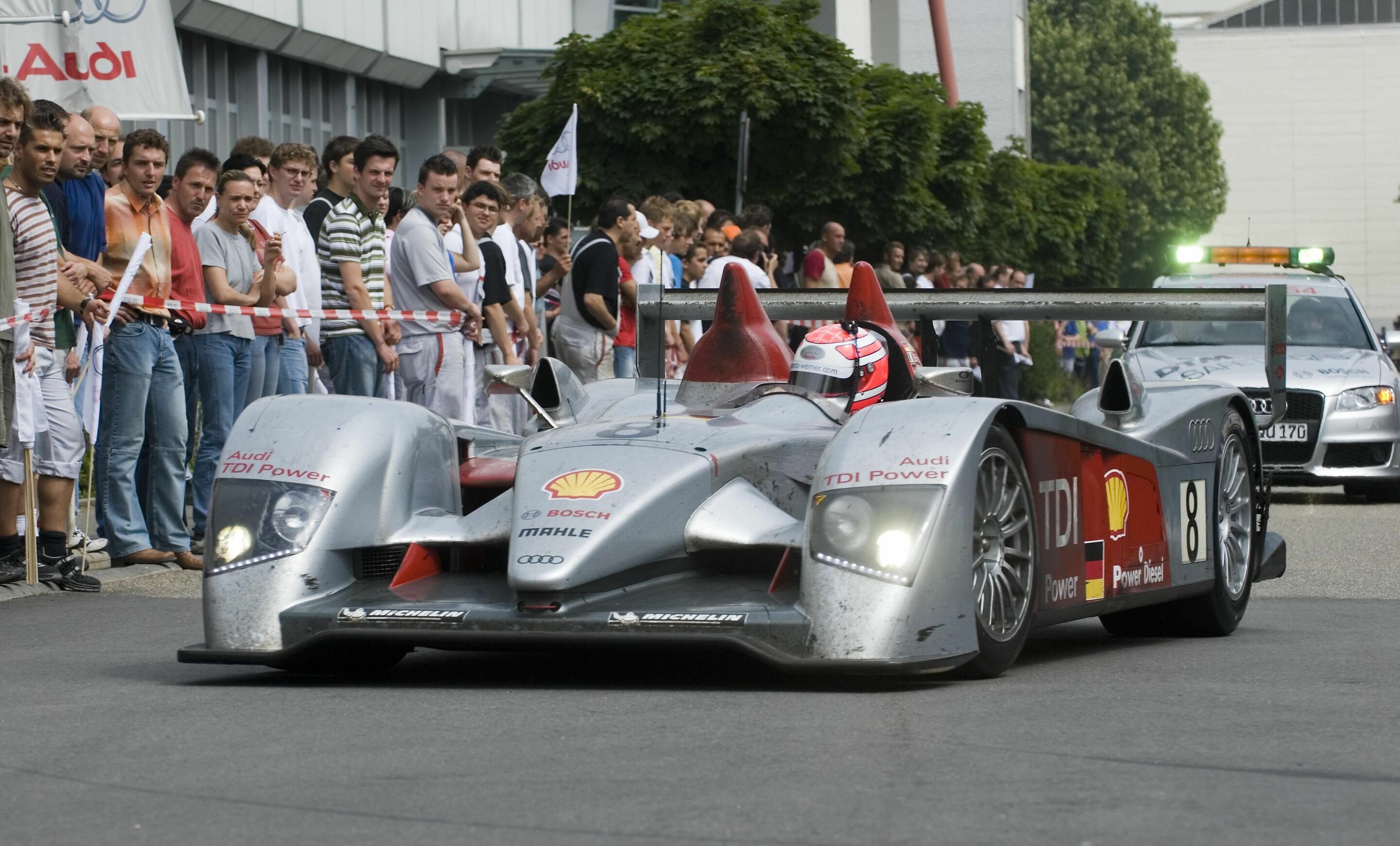 Le Mans win accelerates TDI development
Le Mans win accelerates TDI development
95 sensors gather data in Audi R10 TDI Transfer between motorsport and production technology Audi R10 TDI makes demo laps at Neckarsulm factory
Audi celebrated the historical first triumph of a Diesel engine at the 24 Hours of Le Mans by making several demonstration laps at the Neckarsulm factory. Marco Werner, who won the French endurance classic together with Frank Biela and Emanuele Pirro last weekend, was at the controls of the winning Audi R10 TDI.
Thousands of Audi employees cheered Marco Werner as he reeled off the laps around the factory grounds. Several of the employees were either directly or indirectly involved on the success of the Audi R10 TDI in Le Mans. The V12 TDI engine, which produces more than 650 hp, was created at Audi Sport in the Sport and Special Engine Department which is located at the factory in Neckarsulm. “The direct link between Audi Sport and the AUDI AG Technical Development (TE) is one reason why we are so successful in motorsport”, explains der Head of Audi Motorsport Dr. Wolfgang Ullrich. “We are able to resource completely the know-how and test rigs of our colleagues in the road car development. This made it possible for us to implement the advantages from Audi’s production technology into the first Audi TDI race engine at the 24 Hours of Le Mans, the world’s toughest car race – and all this in the shortest possible time frame.” At Audi, the transfer between motorsport and production technology also functions in the opposite direction. The Le Mans engine’s crankcase is manufactured from aluminium – a design that could well be seen in mass production in the future at Audi. The race engine’s fuel injection pressure lies well over the 1,600 bar that is currently achieved in production engines. The combustion pressures also reach values previously never before seen in any Audi engine. Dr.
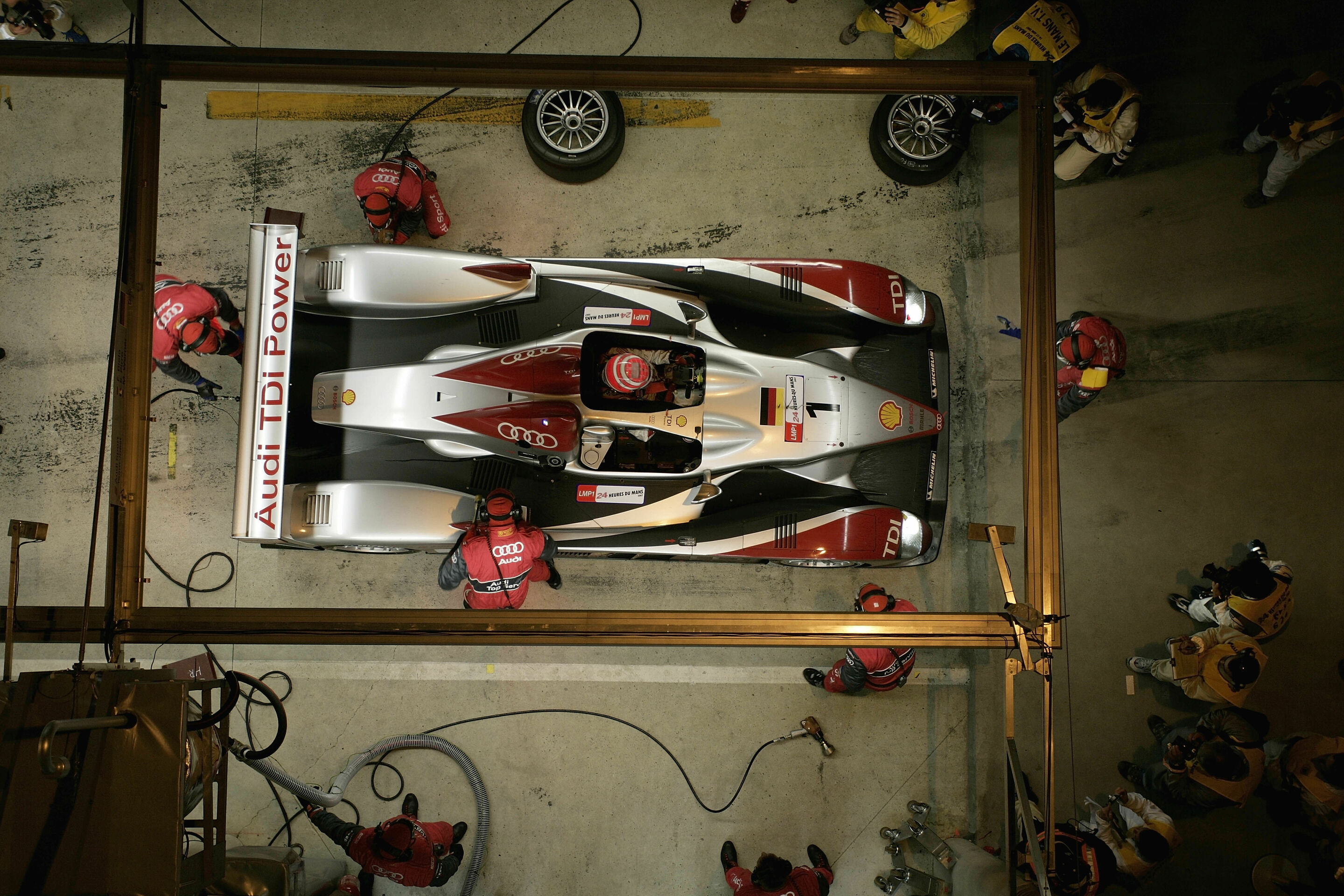 Facts about Audi’s seventh Le Mans victory
Facts about Audi’s seventh Le Mans victory
The spectators at the Norisring can also see Audi’s revolutionary diesel sportscar in action: Frank Biela spools off several demonstration laps with the R10 TDI on Sunday at 1:10 p.m., just before the start of the DTM race.
Facts and figures about Audi’s latest victory at Le Mans: 250,920 spectators watched the 75th running of the 24 Hours of Le Mans “live” at trackside – a new record. The victorious Audi R10 TDI at Le Mans had the chassis number 202. This car had already won the 12-hour race at Sebring (USA) in March, followed up that victory by completing another 12 hour test at Sebring and completed a 30-hour test at Paul Ricard (France) in April. With its seventh win – from only nine starts – Audi jumped to third position in the Le Mans all-time winners list. Only Porsche (16) and Ferrari (9) have more Le Mans victories. Emanuele Pirro mounted the podium at Le Mans for the ninth time in succession. Frank Biela and Emanuele Pirro both celebrated their fifth win at Le Mans. As a result, they now hold third place in the all-time winners list together with Derek Bell and behind Tom Kristensen (seven wins) and Jacky Ickx (six). It was the third successive Le Mans win for Marco Werner. The average age of the winning team was 43 – proof that experience is also needed at Le Mans. It was the ninth Le Mans triumph for Reinhold Joest’s team. As result, it is by far the most successful Le Mans team. Tyre partner Michelin celebrated its tenth successive Le Mans victory. The winning car completed a total of 369 laps (eleven less than last year). This equates to a distance of 5,029.11 kilometres at an average speed of 209.152 kph. Including the second qualifying session and warm-up, the V12 TDI engine in the rear of the triumphant R10 TDI covered more than 5,600 kilometres without a single technical problem.
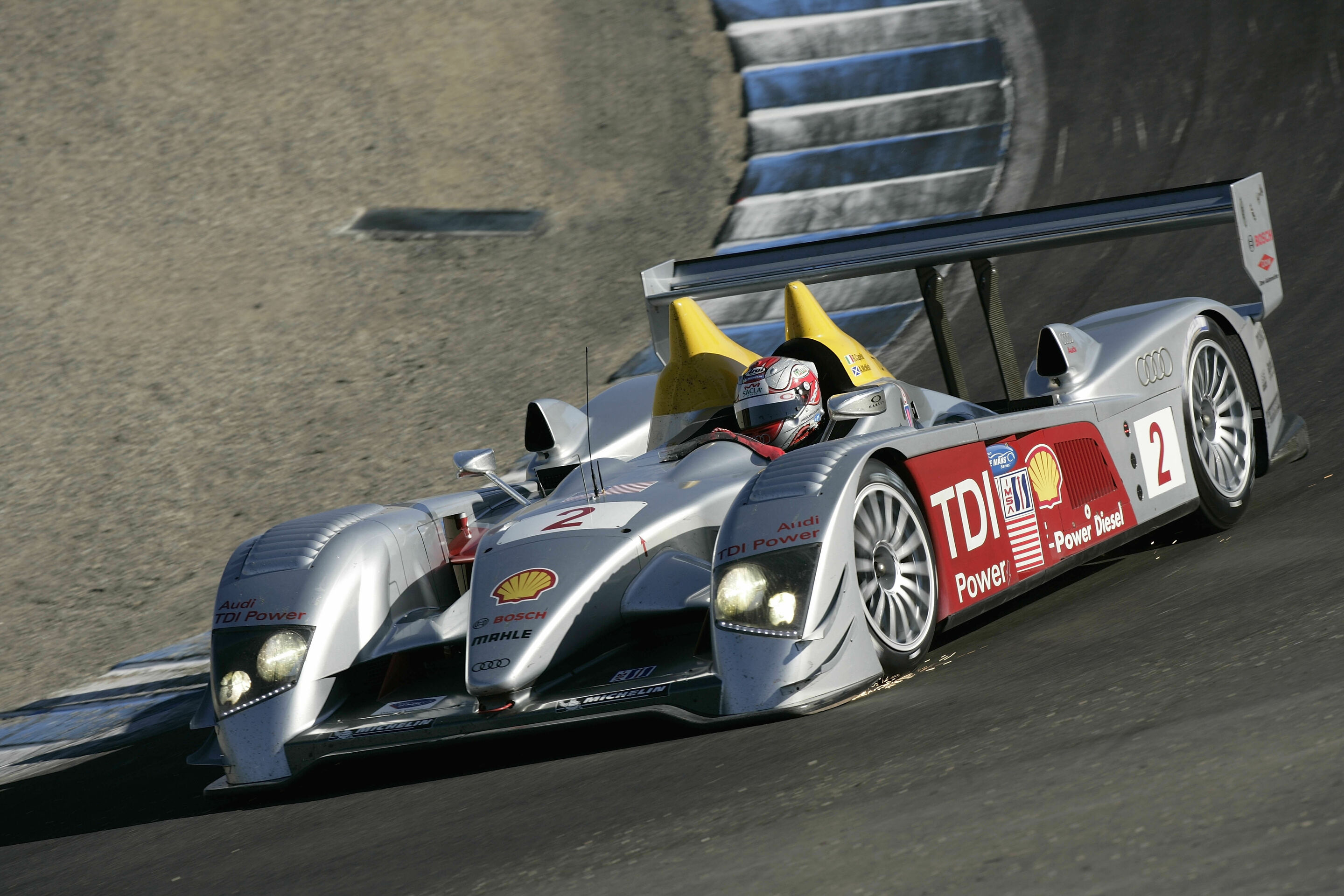 Audi R10 TDI ends début season undefeated
Audi R10 TDI ends début season undefeated
1-2 victory in American Le Mans Series’ finalé Low consumption of Audi’s TDI engine proves decisive Eighth victory in the eighth race for the R10 TDI
With a 1-2 victory in the finalé of the American Le Mans Series at Laguna Seca (California), AUDI AG yet again has written a piece of motorsport history: The Audi R10 TDI is the first Le Mans Prototype to remain unbeaten in its début season. The revolutionary diesel sportscar competed in eight races since the début in March, crossing the finish line eight times as the outright winner.
Decisive in the triumph at Laguna Seca was the consumption advantage of the modern V12 TDI engine. Starting from fourth and fifth positions on the grid, both Audi R10 TDI sportscars lost a lap in a turbulent first half of the race. Emanuele Pirro had to come into the pits after just three laps when part of the onboard camera worked lose and dropped between the pedals. Just before the end of the second hour, Allan McNish collided with a competitor while braking for the famous “Cork Screw”. Changing the Audi’s damaged front section and the following stop-and-go penalty also cost the second R10 TDI a lap. With a clever strategy, taking perfect advantage from various Safety Car periods, Audi Sport Team North America was able to bring both cars back onto the same lap as the leaders. In the final stage of the thrilling race, the team was able to take advantage from the low consumption of the diesel engine: While the competitors had to come into the pits once more during the final hour for refuelling, both R10 TDI cars went on until the finish without another pit-stop. Allan McNish was able to complete 64 of the 159 laps with a single tank of diesel with reduced revs and power – eight more than before. With the last drops of Shell Diesel V-Power in the fuel tank, McNish crossed the finish line as winner. For the Scot and his Italian team-mate Dindo Capello, it was their seventh outright victory of the season in ten races.
